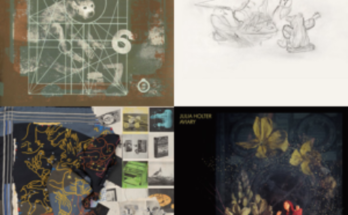Where is the heart of hip-hop located? Is it in the 9mm Beretta tucked in the waist of a hustler holding the block down? Or is it in the head of an aerosol can gracefully tagging an urban viaduct in the middle of the night?
“I love the game but don’t do it for all the ‘backpackers.’ I do it for all the gangstas, hustlers, hoes and all the trappers,” said Al Gator, up and coming MC from College Park, Georgia, on his track “Good With Them Numbers.” Gator is highlighting – not a growing sentiment but a steady sentiment in the world of hip-hop – that the ‘backpacker’ per se who doesn’t represent, is as “real” as a stereotypical “hood” MC.
But let’s clarify some things from above before delving further into the subject.
What is a backpacker? As we know in all genres of music, diversity exists, and hip-hop is no exception. A backpacker is a little hard to explain but easy to point out. If you prefer A Tribe Called Quest over NWA, then, chances are, you have backpacking tendencies. A backpacker may be overtly political while a gangsta rapper is mostly political by accident. The diction of a backpacker may be more superfluous while a gangsta rapper may reside in the house of blunt simplicity in comparison. If you know who Mad Villain is and turn the radio off when you hear Nelly’s new single, then you could be considered a backpacker; but don’t worry, it’s not a bad thing. Even Eminem at one point in time was a backpacker.
So now that we’ve established what a backpacker is, we can talk about the difference in the music and why it doesn’t relate to some people who say that they stand under the umbrella of hip-hop. What I continually argue is that the vast majority of imagery that any one person sees in the media when relating to hip-hop is the prototypical bare-chested, tatted up, gun toting, dark skinned black male who raps about selling drugs, killing cops, slapping … well you get the point.
That imagery, one can argue, stems from a song by Melle Mel and Grandmaster Flash and the Furious Five called, “The Message.” It painted the picture of black and Latino/a urban life in the 1980s under the Reagan Administration and literally showed how hard it was to live on “the block.” When Biggie said, “The streets is a short stop/either you’re slinging crack rock or you got a wicked jump shot,” in the song “Things Done Changed” on his debut album, he was making a valid naturalistic observation about socioeconomic problems plaguing the black community. The Notorious B.I.G. was considered a gangsta rapper by most standards, but his explicitness had a context that didn’t separate from the overall theme of urban turbulence on his first album. But as Chuck D said “Money dictates direction,” and the direction and theme that began with “The Message” transformed into NWA. Hip-hop was forever changed with the glorification of the violent, fend-for-himself gangsta rapper.
Don’t get me wrong, the backpacking camp has its fair share of violent songs like Talib Kweli and Dead Prez’s “Sharpshooters” on the Lyricist Lounge’s second compilation album where they advocate self-defense from the government with lyrics like “I’m one with my gun, I love it like my first son.” But again, the political context remains omnipresent with the focus being on awareness. Still, the wedge has been driven deeper with this gangsta phenomenon being the hammer. It has made people, me included, come up with a more detailed system of hip-hop taxonomy.
“Rappers spit rhymes that are mostly illegal, MCs spit rhymes that uplift the people,” as KRS-One said in the song “Classic.”
Gangsta rap was a close relative of hip-hop’s “message” of an ignored black youth, but now, it is seen as a distant cousin that ran off and had some illegitimate kids that backpackers and overall hip-hoppers want nothing to do with. Al Gator is dope, but his songs carry on an overused formula that doesn’t move us forward. In short, through gangsta rap, hip-hop is stagnant.
This new kid, George Ploss, will be featured bimonthly in the buzz this summer and can be reached at gploss2@uiuc.edu



